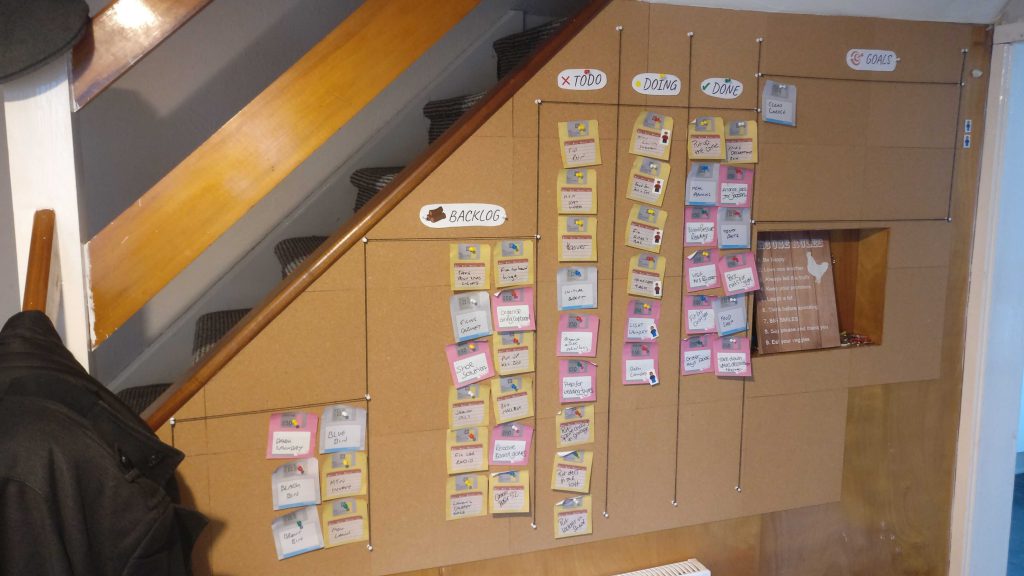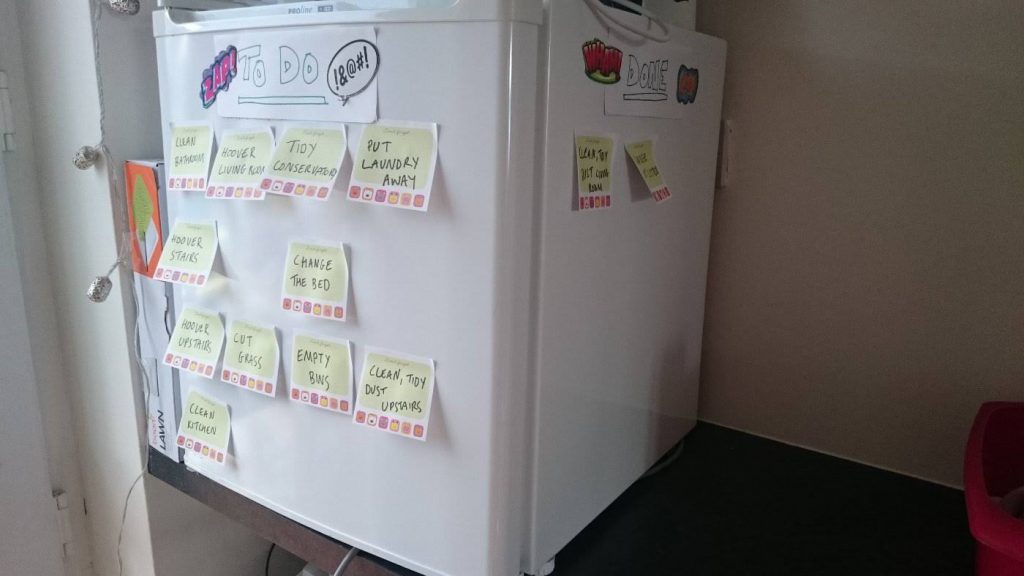
How to find a good space for your Home Scrum board
The very first decision to make when getting your Home Scrum system set up is where you should put your board. It needs to be somewhere where you will see it frequently. If it is tucked away in a less-used room (or worse, actually put away most of the time) you will use it less. If it is set up right by where you usually sit in your house, you will tend to refer to it multiple times a day, without any extra effort. This is extremely important in setting yourself up for success.
However, that doesn’t mean it’s easy to find the wall-space you need. If the board is just for one person in your household, it might not need to be very large. However, if you want it to capture most or all of the household’s activities, it could easily take up an appreciable chunk of wall. We started with a board of four by four foot (already large), and after a year or so added another identical one right next to it. That is probably more space than we really need, but we still use it all. Now that we’re redecorating our house, we are having to give serious thought to where to put the boards; we will probably keep them in the room where the computer ends up, because that room will likely get used even more than the living room or kitchen.
If your main communal living spaces, like the kitchen or living room, simply don’t have any wall-space available (and you’re not willing to sacrifice the current mirror or pictures or other wall-residents), then there are some more creative solutions: using the backs of doors, the triangular wall-space under the stairs, or the wall beside the stairs (which probably isn’t where you normally hang out, but at least you walk past it often). People have even gone three-dimensional and wrapped their board layout around two exposed sides of a boiler or fridge or kitchen cupboard. If you don’t mind obscuring the view, you can even use a window, although this wouldn’t be ideal for a long-term solution. The great thing is that Scrum is so flexible that you don’t even need a real board if one won’t fit; you can use whatever surface is available as the background, and stick tasks to it in whatever way works.










